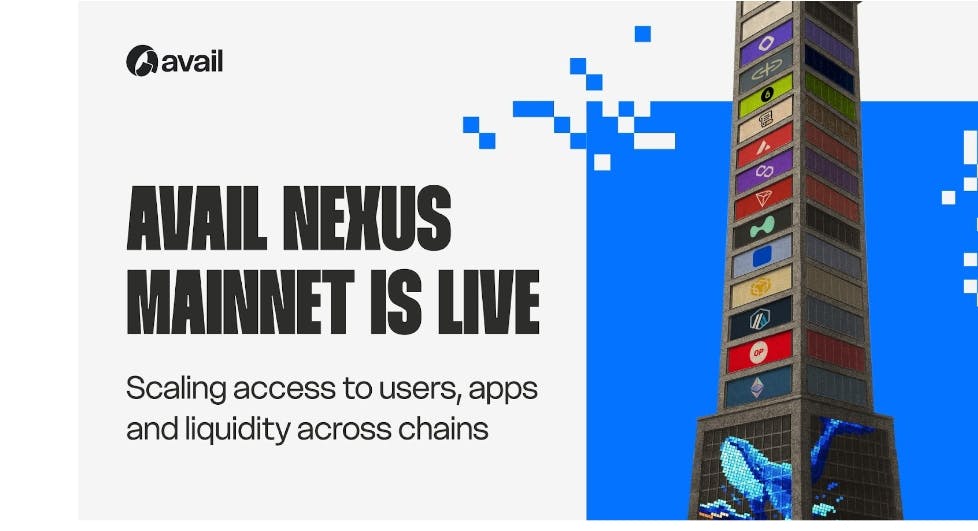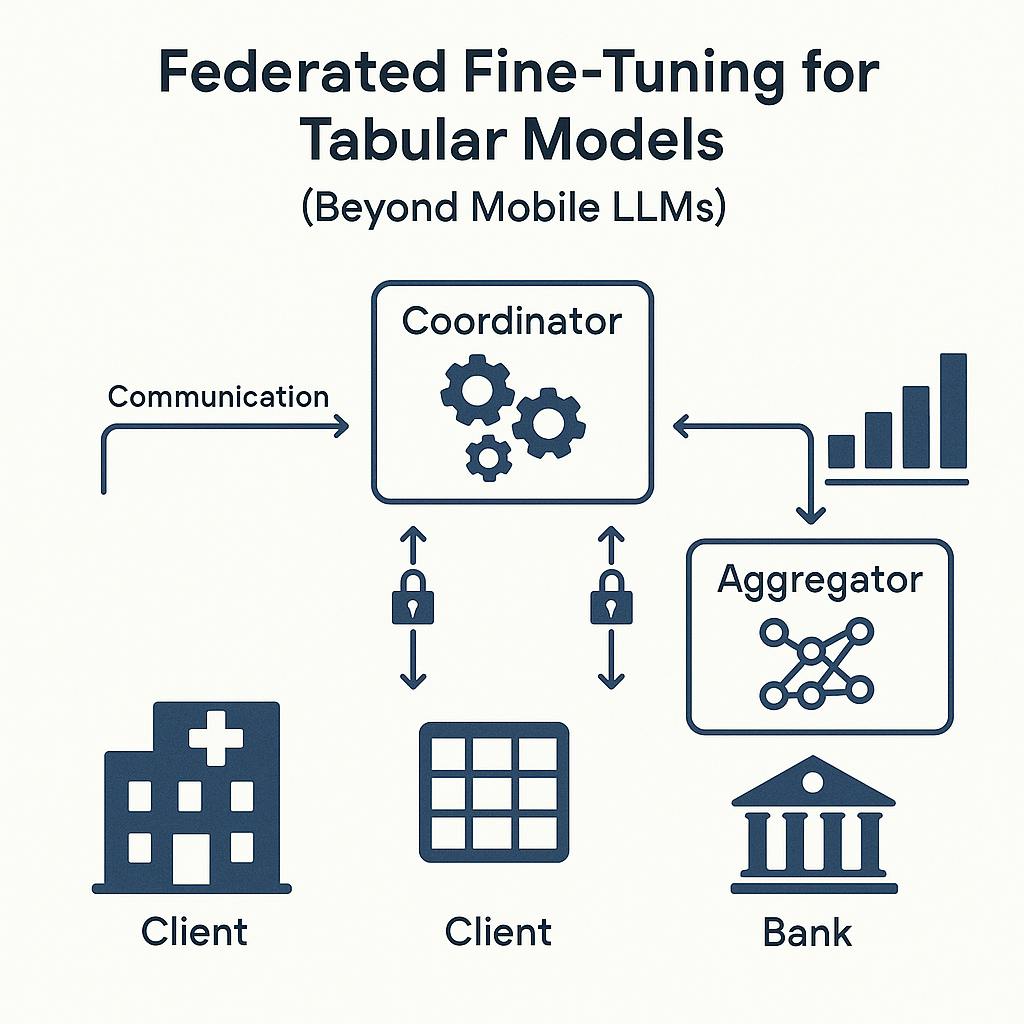B2B marketing has a reputation for being dry, predictable, and, well… a little boring. But the truth? The best B2B marketers are doing work as boldly and creatively as anything in B2C.
Gone are the days when a slick website and a handshake sealed the deal. Today, selling to businesses means understanding complex buying committees, creating detailed use cases to map customer journeys and pain points, and using digital channels to cut through the noise. 📣
In this blog post, we’ll dive into compelling B2B marketing examples that showcase how businesses navigate these challenges to drive growth. 📊
B2B Marketing Examples from the Real World: Inspiring Strategies for Business Growth
Understanding B2B Marketing
B2B marketing, or business-to-business marketing, involves promoting products or services from one business to another.
Unlike business-to-consumer marketing (B2C), which targets individual consumers, B2B marketing focuses on building relationships and solving organizational problems. It involves longer sales cycles, multiple decision-makers, and higher-value transactions.
Instead of flashy ads or impulsive buys, B2B marketing prioritizes professional connections, tailored solutions, and strategic alignment.
Examples include SaaS platforms, consulting services, or supply chain partnerships that help businesses run more efficiently.
🔍 Did You Know? On average, B2B organizations dedicate 8.7% of their total budget to marketing, highlighting its importance in driving business growth and customer engagement.
Types of B2B Marketing
B2B marketing strategies vary depending on goals, industries, and target audiences. Here are some of the most effective approaches:
- Content marketing: Sharing blogs, whitepapers, and videos helps educate potential clients and nurture them throughout decision-making. It positions your business as a thought leader and builds trust
- Referral marketing: Encouraging referrals creates a ripple effect, as potential customers are more likely to trust recommendations from credible sources
- Event marketing: Participating in trade shows, hosting webinars, or attending conferences provides opportunities to engage directly with potential clients
- Influencer marketing: Collaborating with respected industry experts boosts credibility and expands your reach within a specific market. Their endorsement can lend authority to your brand and attract the right audience
- Account-based marketing (ABM): Tailoring marketing efforts for high-value accounts helps address specific challenges and goals of target clients to create stronger relationships and drive higher returns
- Email marketing: Engaging leads and clients through personalized messages, newsletters, and campaigns is a cost-effective way to nurture long-term relationships
- Social media marketing: Connecting with professionals, sharing thought leadership content, and building an online presence through platforms like LinkedIn and Twitter help businesses grow
- Search engine optimization (SEO): Optimizing content and websites to improve search engine rankings ensures that your business reaches potential clients when they’re actively searching for solutions
- Pay-per-click (PPC) advertising: Running paid ads on search engines and social media channels helps target specific industries or decision-makers, delivering quick results with measurable return on investment (ROI)
🤖⚡ From campaign planning to reporting, AI is changing the way marketers work. The video above shows how it helps B2B teams do more with less.
🔍 Did You Know? Around 35% of B2B businesses handle their marketing activities in-house, showcasing a preference for maintaining control and leveraging internal expertise.
8 Inspiring B2B Marketing Examples
Let’s take a closer look at eight standout B2B marketing campaigns—and what made each one successful. 👀
1. ’s industry-specific, tailored resources

Forget the stereotype of buttoned-up B2B ads. has taken a creator-first approach, borrowing the best of B2C playbooks—short-form TikTok and Instagram videos, meme-driven storytelling, and highly shareable “work pain” skits—to break into feeds and conversations that most SaaS companies can’t touch.
These campaigns didn’t just entertain; they built brand recognition and pipeline by meeting audiences where they actually spend time. What stood out was how blended viral social tactics with a strong product narrative: every video tied back to the platform’s promise of cutting through work chaos.
And the kicker? The team used itself to run the entire content engine. Scripts lived in Docs, content calendars in Calendar, dependencies tracked in Tasks, and performance measured in Dashboards. With Brain, marketers draft captions, test headline variations, and even generate hashtags directly in-flow. These capabilities reflect a broader shift in how AI writing tools are being embedded into marketing workflows, allowing teams to accelerate content creation while keeping messaging consistent.
This meta-approach—running marketing inside the product—made it both authentic and incredibly efficient.
📌 Key elements:
- Creator-style campaigns on TikTok and Instagram that humanized B2B marketing
- A focus on relatable work pain points turned into viral, shareable skits
- Behind-the-scenes workflow powered entirely by (Docs, Dashboards, Automations, Brain AI)
🧐 What worked: made B2B marketing bingeable by leaning into relatable humor and creator-style storytelling. Instead of pushing features directly, the team tapped into universal workplace moments that rack up views and shares—while subtly tying back to productivity chaos (the exact problem solves).
This skit about project manager chaos shows how a 30-second laugh can earn millions of impressions—and start conversations that a whitepaper never could.
By parodying office culture, this video proves B2B can play in the same social spaces as B2C—and win with humor that’s instantly shareable.
🎯 Takeaway: Infuse your B2B marketing with creativity from consumer playbooks. Pair entertaining content with clear product narratives, and run your campaigns through the same tools you’re promoting to make the story real.
2. HubSpot’s inbound marketing movement
HubSpot introduced the inbound methodology by focusing on educational content. The campaign attracted businesses by offering free resources such as courses, guides, webinars, and blog posts that addressed common marketing challenges.
📌 Key elements:
- High-value resources that solved real-world problems
- Practical tools, including templates and analytics, for marketers
- A consistent focus on audience needs over product promotion
🧐 What worked: HubSpot demonstrated expertise by solving audience problems before promoting its platform. This approach made businesses see HubSpot as a valuable partner in their growth.
🎯 Takeaway: Creating educational content that addresses audience pain points can build long-lasting trust and authority.
3. Adobe’s ‘Experience Business’ campaign
Adobe launched a programmatic ad campaign to showcase the power of automation and AI in digital advertising. The campaign used real-time data to deliver personalized ads tailored to audience behavior. Dynamic creatives adjusted messaging based on user interactions, demonstrating Adobe’s ability to optimize ad performance at scale.
📌 Key elements:
- AI-driven programmatic ads that adapted to audience behavior
- A data-first approach to improve ad targeting and engagement
- Seamless integration of automation and creativity in marketing
🧐 What worked: Adobe proved that automated, data-driven advertising enhances personalization and efficiency without sacrificing creativity.
🎯 Takeaway: Leveraging AI-powered marketing automation can refine ad targeting, improve engagement, and maximize marketing impact.
🧠 Fun Fact: Podcasts are not just for entertainment. More B2B companies (like Slack) are jumping on the podcast bandwagon to connect with their audience in a more personal, conversational way.
4. Salesforce’s ‘Trailblazer’ campaign
Salesforce celebrated its users as innovators through the ‘Trailblazer’ campaign. This initiative highlighted customers’ success stories, emphasizing how they drove industry transformation using Salesforce’s platform.
📌 Key elements:
- Customer stories that humanized the brand
- A focus on how Salesforce enabled innovation
- Visual and written content highlighting user achievements
🧐 What worked: Salesforce spotlighted its customers, creating a community of loyal advocates while reinforcing its reputation as a tool for growth.
🎯 Takeaway: Celebrating customer success humanizes your brand and inspires potential users to trust your product.
🧠 Fun Fact: The oldest recorded use of whitepapers in B2B marketing dates back to the early 1900s when the British government popularized them as informational documents to persuade policymakers.
5. Shopify’s case studies
Shopify appealed to high-growth businesses through detailed case studies. These stories demonstrated how it helped brands scale operations while maintaining efficiency and profitability.
📌 Key elements:
- Success stories featuring ambitious, well-known businesses
- Clear evidence of scalability through measurable results
- Messaging that aligned with the goals of growth-oriented companies
🧐 What worked: The campaign’s focus on proven outcomes made it highly relatable and persuasive for businesses seeking similar results.
🎯 Takeaway: Highlighting real-world results through case studies builds credibility and motivates businesses to take action.
6. Cisco’s ‘The Network. Intuitive’ campaign
Cisco introduced intent-based networking through ‘The Network. Intuitive.’ campaign, highlighting AI-driven solutions that learn, adapt, and secure networks in real time. The campaign used interactive 3D product imagery, competitive comparison tables, and a DNA readiness advisor to engage businesses and demonstrate the network’s capabilities.
📌 Key elements:
- Interactive demonstrations that clarified complex concepts
- Real case studies showing how businesses achieved better efficiency
- Messaging that aligned with the growing demand for AI tools
🧐 What worked: Cisco simplified technical concepts, making them accessible and engaging while reinforcing its position as a leader in innovation.
🎯 Takeaway: Creating interactive content with simplified messaging demystifies complex solutions and builds engagement.
🔍 Did You Know?
According to the Content Marketing Institute:
- 50% of B2B teams outsource at least one content marketing task
- For companies with 1,000+ employees, that jumps to 75%
- 84% of those who outsource rely on external help for content creation
- Medium-sized companies outsource at 54%, while small ones sit at 37%
7. LinkedIn’s ‘In It Together’ campaign
LinkedIn celebrates professionals who are growing their businesses through its platform. The campaign included stories that combined emotional appeal and practical examples of success.
📌 Key elements:
- Stories of professionals achieving growth and collaboration
- Messaging that reinforced LinkedIn’s value for career development
- A focus on community and shared progress
🧐 What worked: The campaign inspired trust by showing relatable success stories while highlighting LinkedIn’s role in fostering connections.
🎯 Takeaway: Combining emotional storytelling and practical value helps connect deeply with your audience.
🔍 Did You Know? 65% of B2B buyers find short-term content like blog posts and infographics the most engaging, emphasizing the value of concise, easily digestible information.
8. Mailchimp’s ‘Second Act’ campaign
Mailchimp launched ‘Second Act,’ a content series celebrating entrepreneurs who started new ventures later in life. Partnering with VICE Media, the campaign highlighted inspiring stories of resilience and reinvention. Each episode followed a different business owner, showing the challenges they faced and the strategies they used to build something new.
📌 Key elements:
- Real-world stories that resonated with aspiring entrepreneurs
- A media partnership that expanded reach and credibility
- Messaging that aligned with Mailchimp’s brand values and mission
🧐 What worked: Mailchimp connected with business owners personally, using storytelling to inspire and engage.
🎯 Takeaway: Sharing real success stories strengthens brand credibility and fosters more profound connections with your audience.
💡 Pro Tip: Customize marketing plan templates for your brand’s goals. These templates can be easily adjusted to fit your business’s goals, budgets, and audience, ensuring a relevant approach.
How to Apply These Examples to Your B2B Campaigns
Great B2B marketing takes more than bold ideas—it takes flawless execution. That’s where comes in. As the everything app for work, it helps teams cut through tool sprawl by unifying campaign planning, content creation, launches, and performance tracking in one platform. With for marketing, leading teams (including our own) turn strategy into measurable outcomes with speed and precision. 📈
1. Start with a clear brief and aligned goals
Every great campaign starts with alignment. Collect campaign requests through Forms, then turn them into actionable Tasks with owners, budgets, and deadlines.


Use Goals to define outcomes—like 1,000 qualified leads in a quarter—and break them into milestones your whole team can track in real time.


📌 Why it matters: Goals turn vague ideas into metrics your exec team actually cares about—pipeline, revenue, and ROI.
➡️ Back it up with proof: Share case studies, testimonials, or before-and-after visuals that show how your product reduces response times, increases conversions, or cuts costs.
🔍 Did You Know? In the US, 66% of B2B buyers discover products through internet search results, highlighting the critical role of strong online visibility and SEO in marketing strategies.
2. Build a content calendar that works like a newsroom
Consistency drives trust. Use the Calendar or the LinkedIn Content Calendar Template to plan out campaigns weeks ahead. Strong calendars work best when paired with structured communication plan templates, which ensure messaging is aligned across every channel and stakeholder from day one.
Assign writers, designers, and social managers directly from the calendar, and track status updates without endless email chains.
📌 Why it matters: A newsroom-style calendar ensures your brand shows up with regular, high-value content—whether on LinkedIn, TikTok, or Reddit. Well-built content calendar templates make this structure repeatable, helping teams assign ownership, track formats, and maintain publishing cadence at scale. Reddit.
➡️ Add value: Pair your calendar with interactive resources—ROI calculators, checklists, or templates your audience can customize. These assets earn trust while moving prospects down the funnel.
🧠 Fun Fact: John Deere’s 1895 magazine, The Furrow, is one of the earliest examples of B2B content marketing.
3. Create content collaboratively—and faster with AI
Collaboration fuels execution. Chat gives your team a space for quick updates, brainstorms, and campaign feedback. Use Posts to pin important announcements—like creative guidelines or campaign recaps—so nothing gets buried in the scroll.


Inside Docs, teammates can co-edit content in real time, leave Assign Comments that instantly become tasks, and tag stakeholders for input. This keeps collaboration structured without endless email chains or Slack back-and-forth.


During meetings, the AI Notetaker captures discussions automatically, turning them into structured notes and assigning follow-up Tasks. No one leaves wondering what got decided.
📌 Why it matters: When communication, feedback, and decisions live inside your workspace, your team spends less time chasing updates and more time moving campaigns forward.
➡️ Extend into thought leadership: Use Docs to co-author whitepapers, reports, or blog series with internal SMEs or external partners, positioning your brand as a trusted industry voice.
📮 Insight: 37% of our respondents use AI for content creation, including writing, editing, and emails. However, this process usually involves switching between different tools, such as a content generation tool and your workspace. With , you get AI-powered writing assistance across the workspace, including emails, comments, chats, Docs, and more—all while maintaining context from your entire workspace.
4. Create content faster with AI and media tools
Once the team is aligned, move into creation. Draft assets in Docs, where approved outlines are already in place. Supercharge production with Brain, which can generate ad copy, outline blogs, or draft captions in seconds.


With Brain Max, you can capture raw ideas on the go with talk-to-text and instantly convert them into tasks or content drafts. And with Clips, you can record quick walkthroughs or design feedback videos to speed up revisions.
Marketers also lean on Task Priorities to make sure urgent deliverables (like a last-minute TikTok or executive deck) don’t get lost among routine tasks. With Custom Fields, you can track campaign budgets, content types, target personas, or funnel stages directly on each task—so every asset has the context it needs.
➡️ Extend into social storytelling: Use Brain to suggest TikTok captions, LinkedIn ad variations, or Reddit AMA responses that keep tone consistent with your brand.
📌 Why it matters: Brain, Brain Max, and Clips help your team create faster without losing context—turning ideas into polished campaigns in less time.
💡 Pro Tip: Enhance SEO using AI in content marketing. Let these tools optimize your content for search engines by suggesting keyword improvements, meta descriptions, and better content structure.
5. Launch campaigns and engage communities where they are
Execution is where campaigns win or die. Plan big launches visually with Whiteboards, then move ideas straight into Tasks. Use Task Dependencies to ensure nothing goes live too soon—for example, locking the webinar invite email until the landing page is approved.


Automations keep work flowing: Update task statuses when assets are uploaded, trigger follow-ups when leads respond, or alert the team when milestones are hit. In modern B2B campaigns, effective automation is the backbone of scaling execution, and the best marketing automation software
extends that efficiency across the entire funnel—from nurturing leads to reporting outcomes.
📌 Why it matters: Communities like LinkedIn or Reddit expect authentic engagement. By freeing your team from repetitive admin, you give them more time to actually join conversations, run AMAs, and respond in real time.
🧠 Fun Fact: Unlike paid Google ads that stop working once the campaign ends, B2B content can live on forever, continually bringing in leads and building trust.
6. Measure impact and repurpose wins
Use Dashboards to track KPIs across channels—CTR, signups, leads, or cost per acquisition—in real time. Share dashboards with stakeholders instead of spending hours on slide decks.


Then, repurpose top-performing assets: turn a webinar into LinkedIn clips, a Reddit AMA into a blog, or a TikTok skit into an email opener. Map this repurposing process inside so every campaign generates multiple assets.
📌 Why it matters: Measuring ROI keeps leadership invested. Repurposing extends the life (and the ROI) of every idea.
💡 Pro Tip: Leverage data for smarter resource allocation. Use data-driven insights to allocate your resources to campaigns that have historically shown strong ROI, making your marketing spend more efficient.
Marketing in Sync With
Great marketing isn’t just about creativity—it’s about execution. Execution is easier when everything lives on one platform.
brings content, collaboration, data, and automation together in one place, keeping marketing teams organized, agile, and aligned.
From setting clear goals to generating ideas with AI, helps you plan better, track smarter, and market more effectively.
Ready to bring your next campaign to life? Sign up for and start marketing in sync. 🎨


Everything you need to stay organized and get work done.














